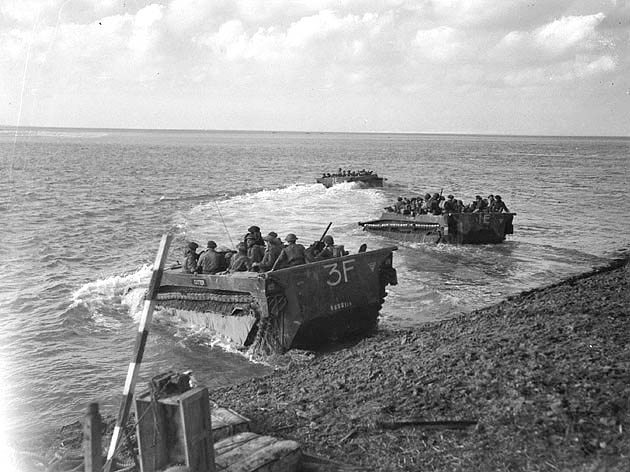Thucydides said:
Joking aside, any unit needing multiple modes of transport (and probably lots of different capabilities, like engineering, long distance signalling and the ability to sustain logistics in a very harsh environment in a single package) would not just be a ordinary battalion, but some sort of mini joint task force.
How such a force is organized and equipped (and what it would be expected to do) would be a very interesting discussion.
You mean like these guys?
The Battle of the Scheldt was a military operation in northern Belgium and the southwestern Netherlands that took place during the Second World War. On September 12, 1944, the First Canadian Army was given the task of clearing the Scheldt of German occupiers. The first attacks began on September 13, with little success.
Under the command of General Henry Duncan Graham (Harry) Crerar, the First Canadian Army was international in character. In addition to the 2nd Canadian Corps (which included the 2nd and 3rd Canadian Infantry Divisions and the 4th Canadian Armoured Division), the 1st British Corps, and the 1st Polish Armoured Division, at various times American, Belgian, and Dutch soldiers were also included as units. The First Canadian Army in northwestern Europe during the final phases of the war was a powerful force, the largest army that had ever been under the control of a Canadian general. The strength of this army ranged from approximately 105,000 to 175,000 Canadian soldiers to anywhere from 200,000 to over 450,000 when including the soldiers from other nations.
The flooded, muddy terrain and the tenacity of the well-fortified German defences made the Battle of the Scheldt especially gruelling and bloody. Indeed, the battle is considered by some historians to have been waged on the most difficult battlefield of the Second World War. At the end of the five-week offensive, the victorious First Canadian Army had taken 41,043 prisoners, but suffered 12,873 casualties (killed, wounded, or missing), 6,367 of whom were Canadians.
http://www.veterans.gc.ca/eng/remembrance/history/second-world-war/liberation-belgium-battle-scheldt












